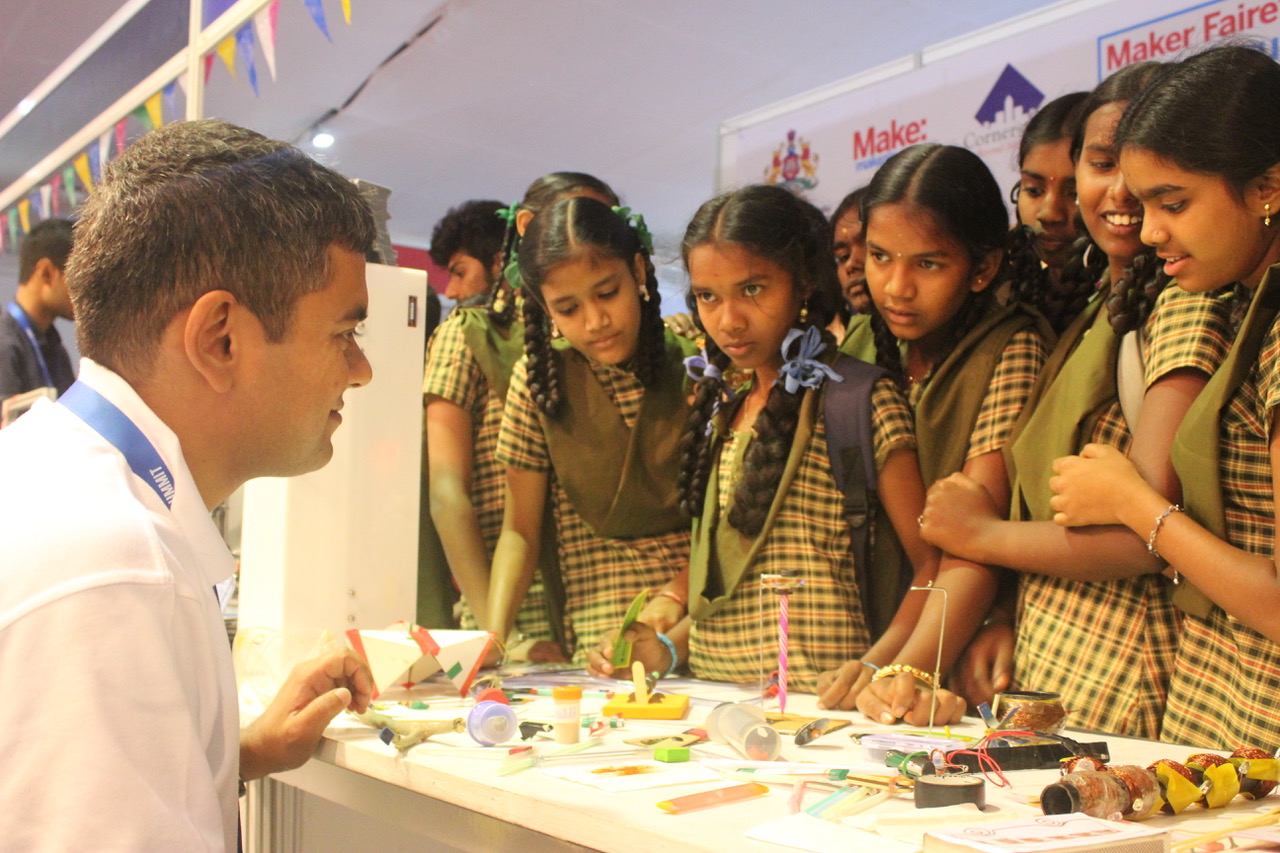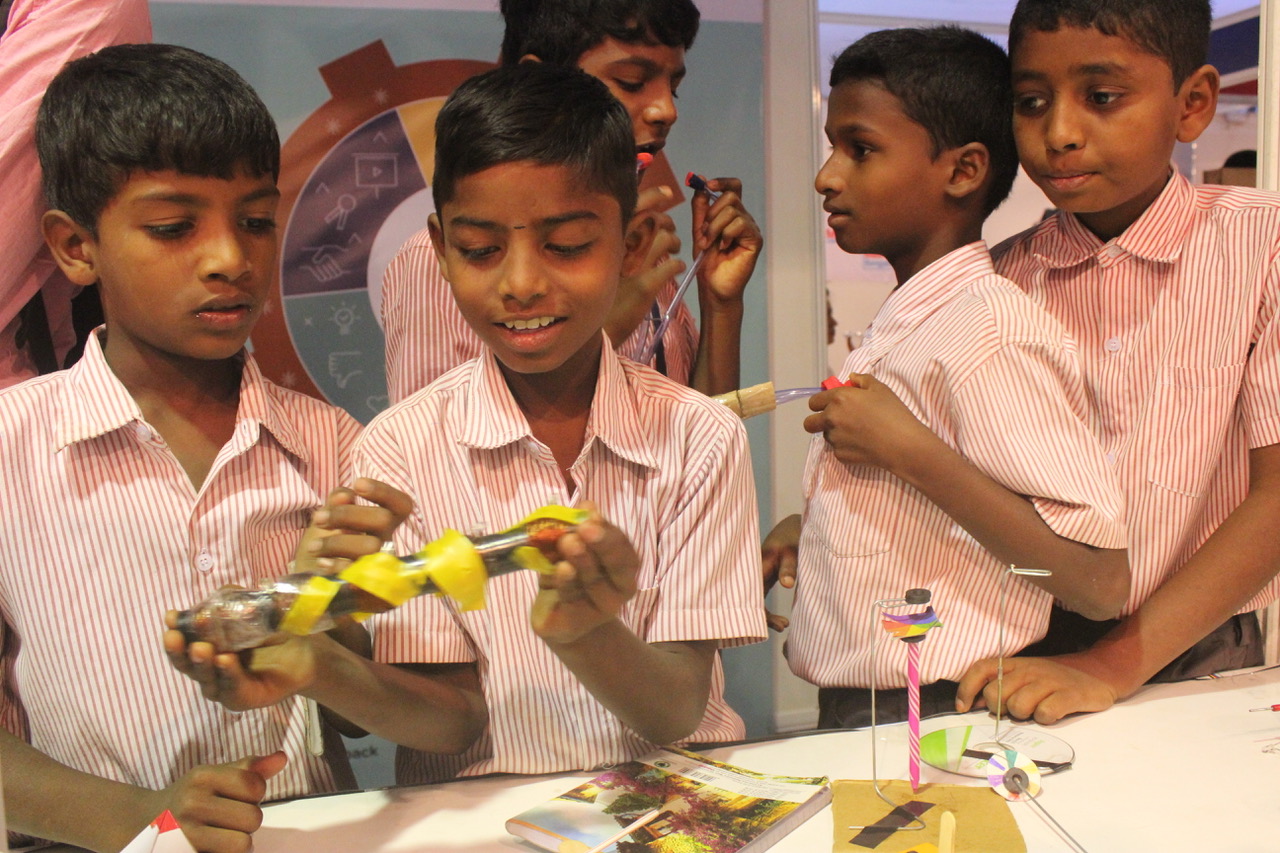No products in the cart.
WHAT YOU NEED TO KNOW
WHAT IS EXPECTED?
The RYSI Award is a 3-stage process open to all children who study in Grade III-X. The idea of the award is to encourage children to create hands-on, experiential science activities that demonstrate a principle in any topic of your choice, occurring in the I to X standard national science curriculum. Working models, toys or experiments that help demonstrate the scientific principle are expected.
HOW CAN I WIN?
We are looking for the following in the innovations you submit:
- Originality of the idea
- Effectiveness with which it conveys the chosen topic
- Ease of availability of the material used
- “Fun” – how much will a child enjoy the activity?
WHAT SHOULD I DO?
You may enter Stage 2 of the RYSI Award by either getting nominated by your school OR participating in Stage 1 of the Award. Go to the process page to find out more. Understand the science behind the activity/topic and review existing experiential, hands-on activities at Arvind Gupta Toys, ThinkTac and other resources. Get creative, innovate an existing activity or create an entirely new one.
DEADLINES?
Nomination deadline to by-pass Stage 1 is the 15th of September, 2023. Submission Deadline for Stage 1 is 31st October 2023. Submission deadline for Stage 2 is the 30th November 2023.
Visit the Schedule page for more details. The requirements for each stage are different and all details are available in the Process section.
Register
Register and create your Raman Award Profile. Access all your submissions and contributions from here.
Go Social
Tweet with #RYSI Award.
Like our page on Facebook. It is more fun with friends.
Interact
Message us on WhatsApp at +917483945803 or mail us on [email protected].
CONTEST RULES
The important terms and conditions are provided below. Message us on WhatsApp at +917483945803 or mail us on [email protected].
1. ELIGIBILITY
The RYSI contest is open to all students studying in III – X standards. The children should not be younger than 8 years and older than 16 years. Home-schooled children in this age group can also participate. The award is only open to individual children and groups are not eligible.
2. HOW TO ENTER
There are two ways to participate:
- Get nominated by your school. A maximum of 3 students can be nominated per school per grade. The nomination page for teachers is set up here. The school may use any internal criteria of their choice to select students. All co-ed schools need to select a minimum of one female student per grade. By getting nominated, a student is automatically put into Stage 2 of the Raman Awards.
- Those who don’t get nominated by their school may still participate in the Raman Awards by participating in Stage 1 of the RYSI Award. For more details, go to the Process page.
3. JUDGING
Our judges includes eminent scientists and qualified volunteers. Their decision on the selection the finalists and the awardees will be final.
4. PRIVACY POLICY
Any information we receive from you will never leave our private and secure servers. We will not use it for any purpose other science education. In order to register and create your profile, we need your email address and mobile number. For the full Privacy Policy, read the Privacy Policy
Innovations by Children
Below are some of the winning entries of the RYSI 2017-18. Included are interesting variations of pre-existing experiential activities as well as entirely new activities created by children.

Dhruv made a classic experiment, a Cartesian Diver, and explained the functioning and concept confidently and succinctly; something that thoroughly impressed the judges. It is a beautiful experiment that shows off a couple of principles: Pascal’s Law, which says that the pressure change through a fluid is transmitted equally throughout the fluid AND that air is more compressible than water, hence it is the air in the balloon or dropper that gets compressed, reducing its volume (hence increasing its density) and allowing the balloon – suspended with weights – to sink in the water.

It is often said that the simplest experiments are also the most beautiful. Arin exemplified that statement by simply showing that placing a powerful magnet (neodymium magnet) very close to the surface of the water creates a wee bit of a trough in the water, due to the “Diamagnetism” of water. If there is a small floating object in the water, e.g. a piece of metal foil, which is non-magnetic, it keeps wanting to be within this trough. So moving the magnet over the surface of the water makes it look like the piece of metal foil has suddenly become magnetic as it seems to follow the magnet! Arin narrated to us that he discovered this while once playing with a magnet sitting in the bathtub! Talk about a eureka moment!

Soham is clearly also a budding musician; not just a scientist! With a winning smile and oodles of enthusiasm, he made and showed off his wonderful “dholak”, a percussion instrument, made with some balloons as the vibrating membranes and rubber bands to help mount on a cylinder. He also added some string to the contraption, so he could hang it around his neck and bring a flavour of Folk India to the occasion! Rock on, Soham!!

Gokulraj used his ingenuity to come up with a model to show how rainwater could be harvested, and used through a series of bottles and pipes (straws) to power turbines to generate electricity. Using both tidal and flow-of-water energy, this could be a model for small-scale energy generation done at home by all, especially in rainy areas.

Kavin made another classic model: a homopolar motor. Though inefficient, it is a wonderful model showing how you can make a motor without a coil! How marvellous! The surface of the magnet itself acts as a coil, and so rotates rapidly as current from a battery is passed through it. Kavin had all the judges spinning in a tizzy when he showed this off.

Dhaatri made a variation of a classic toy, the cup phone. In this case, instead of paper cups, Dhaatri used small plastic containers (urine sample containers!), and connected them with string to come up with her creation. A more ear-sized opening meant that less sound was lost in transmission. The youngest winner is already preparing for a future of congratulatory phone calls!






